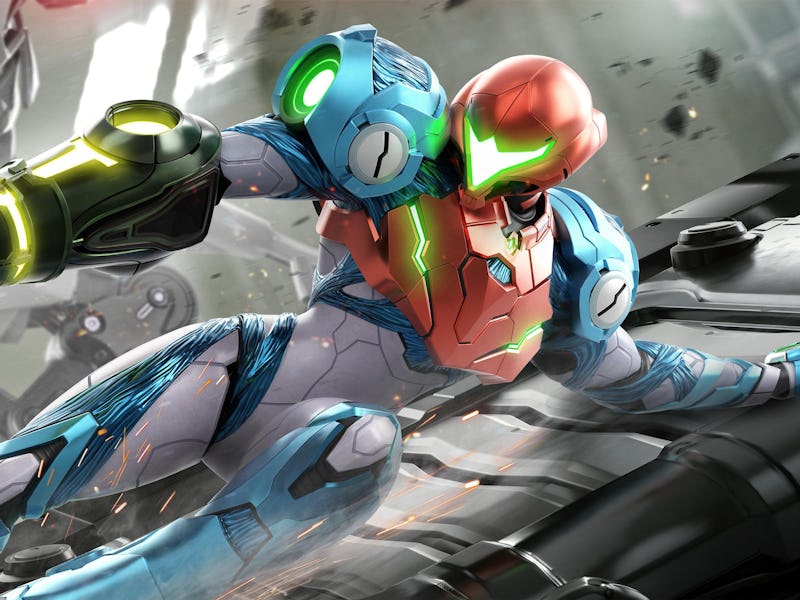Metroid Dread needs to steal one underrated Switch Online feature
Let us save.

Retro games are hard.
When you compare a game released in the ‘80s or ‘90s to a modern entry in the same series, the evolution in design is always obvious. Typically, modern games are more intuitive and user-friendly than something we’d consider retro.
One clear example is the acclaimed Metroid series.
Metroid Dread will be released October 8, 2021, and in many ways, it’ll maintain the basic design philosophies of Super Metroid, a game that launched for the SNES in 1994. But after playing through Super Metroid via the Nintendo Switch Online catalog, one feature stands out — and it’s one that should definitely be included in Dread.
Retro games are less practical by today’s standards
The final boss of Super Metroid is easier to defeat when using save states.
Metroid Dread should let players save whenever they want to.
Commonly referred to as “save states” in emulators — as well as Nintendo’s Virtual Console and through the Switch Online catalog — it’s a feature that’s improved many frustrating older games. Granted, this feature isn’t native to the original version of Super Metroid but is included in the Nintendo Switch Online release.
Typically, this approach to saving can be found in all sorts of games, particularly RPGs like Skyrim or the Fallout series, allowing players to manually save after or before encounters so they don’t lose an inch of progress. And while it’s a welcome inclusion, particularly because player choice is so prominent, save states make a lot of sense for retro games. Being forced to replay difficult platforming sections or combat encounters can be grueling.
While playing through Super Metroid on Switch, I used save states often. In fact, towards the later portions of the game -- when things get tough -- I saved after defeating every enemy and after the more difficult platforming sections. Doing so was essential. I didn’t have a ton of time to spare, so why should I waste it? Does that make me bad at video games? Maybe. But that isn’t something that should keep me, or anyone else for that matter, from experiencing the medium.
Super Metroid is also already more forgiving than many other retro games, even without using save states. Enemies drop health and ammo, and save rooms are typically easy to access. Despite this, save states were always my go-to because it meant I wouldn’t be as frustrated with its difficulty were I to die.
At the end of my playthrough, I realized there was no way I would have gotten through this game without save states. Not a chance. Shouldn’t games be playable by everybody?
Super Metroid isn’t the hardest game in the series, but getting through it without save states is still a tough challenge by today’s standards.
There are more people playing games than ever (2.81 billion as of 2021), and that’s partially because they’re easier to play. Cutting-edge mechanics and features have made games more accessible over the years. Games used to have important information tucked away in user manuals, with no explanation of how to play within the game itself. Now, you can toggle enemy silhouettes on or off in The Last of Us Part II.
Being able to save whenever you want in Metroid Dread would likely result in more players experiencing the game and more players reaching the end.
Save states are, however, a bit of a controversial topic. You could make the argument — and many have — that a game’s integrity is lost when you can save whenever you want. But that’s a subjective argument that also leads to debates about how a game should be made. Does it really jeopardize the developers’ artistic vision when players can customize their experience?
For what it’s worth Metroid Dread probably won’t allow you to save any time you’d like. There isn’t much of a precedent for this feature being included in 2D action platformers. But after playing through Super Metroid completely relying on being able to do so, I can’t help but think about how this feature could work well in future installments.
It wouldn’t have to “ruin” the game for old-school players either. Much like the way Fire Emblem: Three Houses offers a casual mode, allowing players to keep units even after they’ve fallen in battle, Metroid Dread could function similarly. Casual mode could implement saving whenever you’d like while classic mode would have the standard save rooms you’d expect.
Being able to choose which mode you’d like to play at the start of the game would appease all types of gamers. With the Nintendo Switch being as popular as it is, giving its 84.59 million player base more options rather than fewer will always be a good thing.
Metroid Dread will launch for Nintendo Switch on October 8, 2021.
This article was originally published on